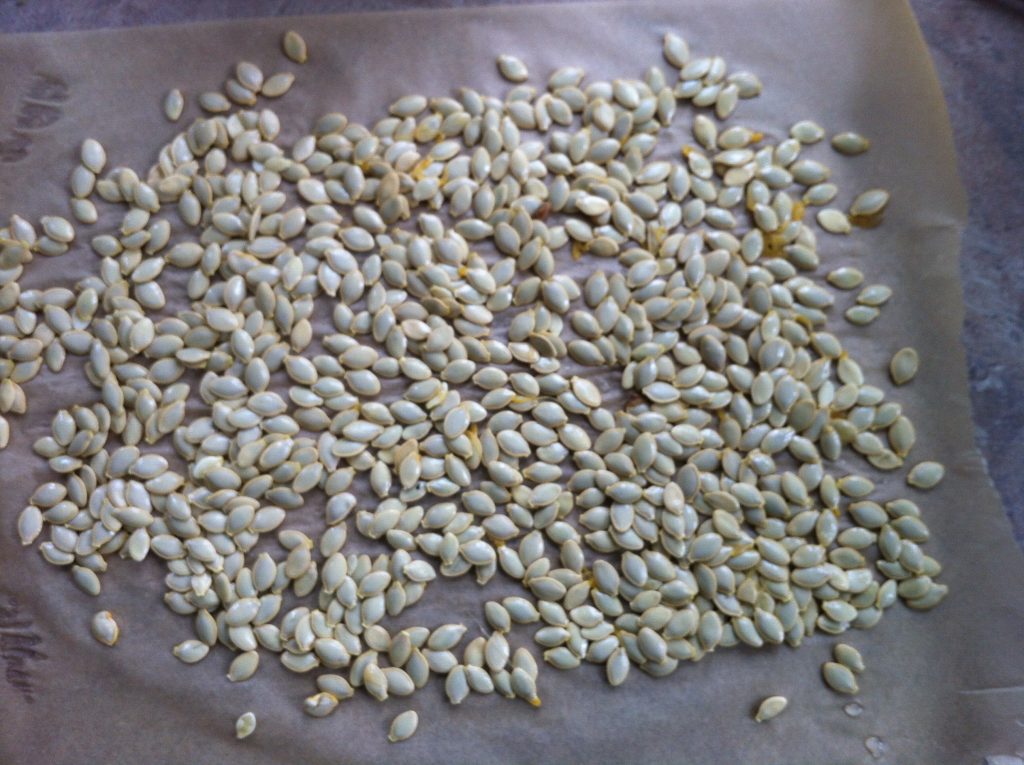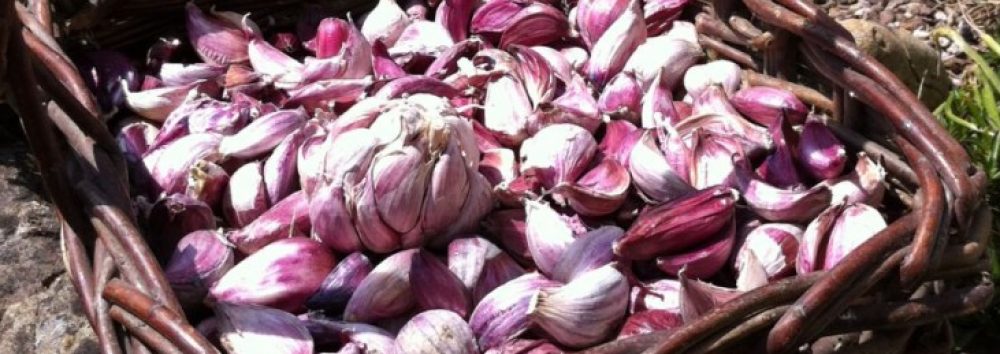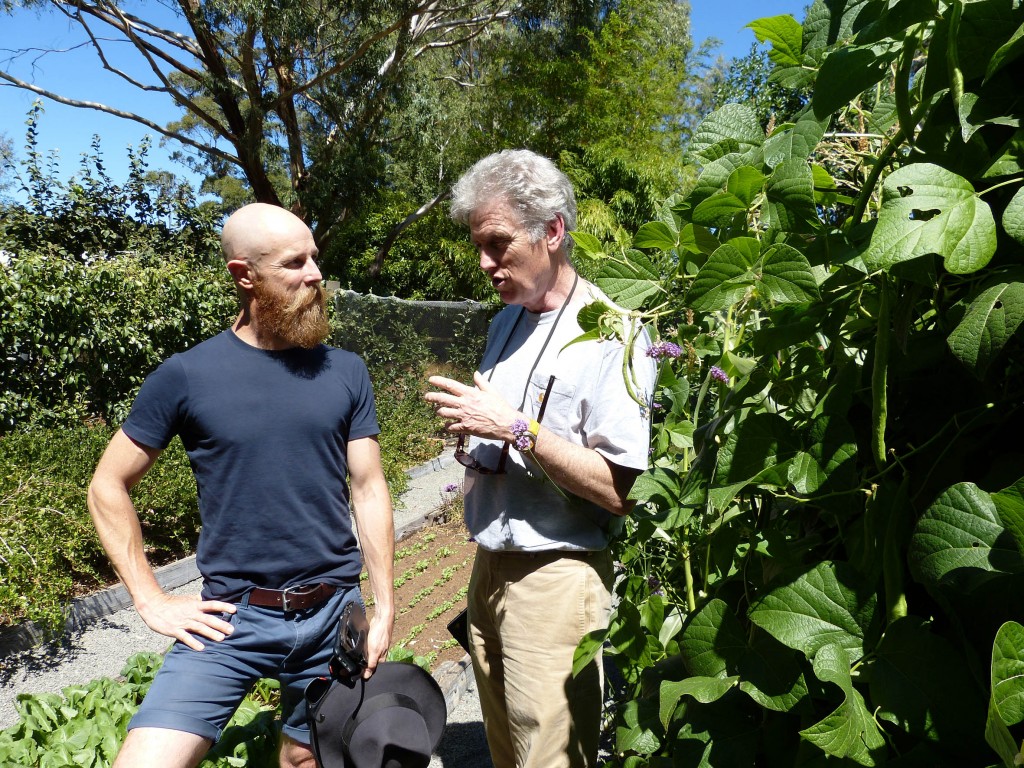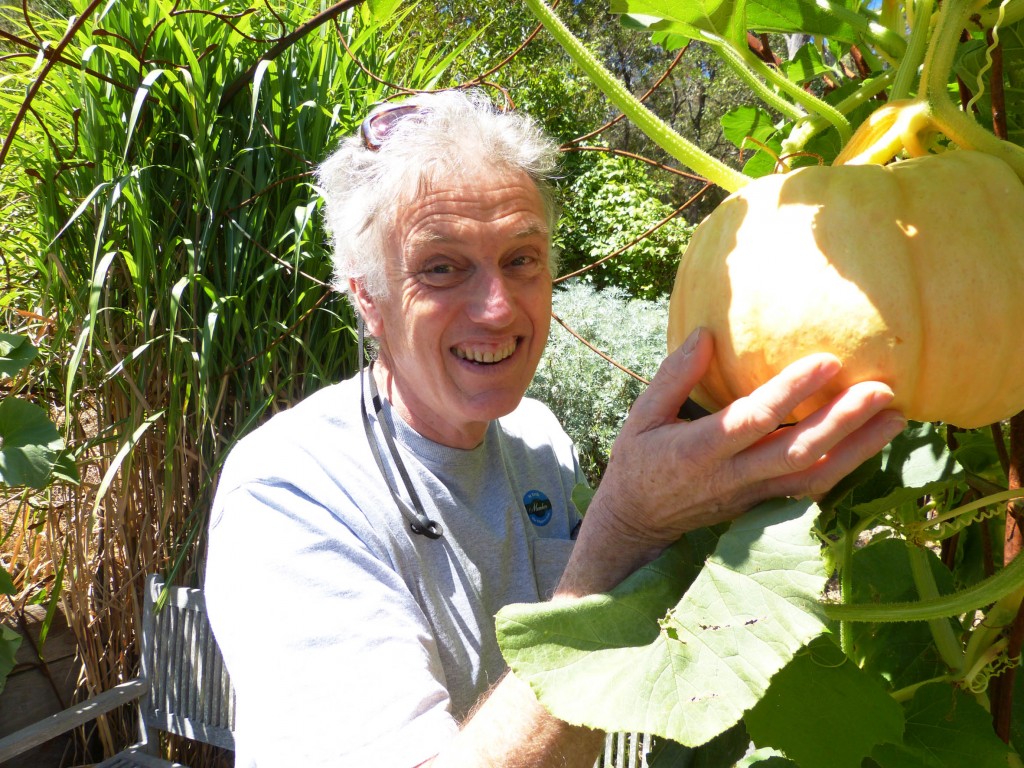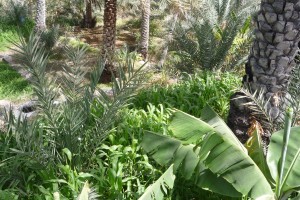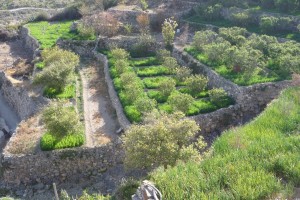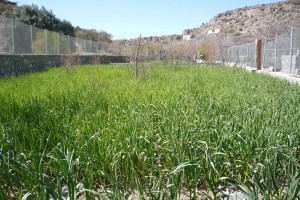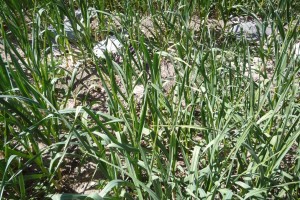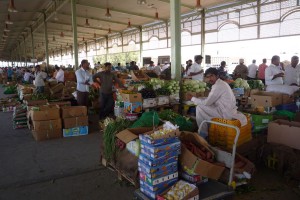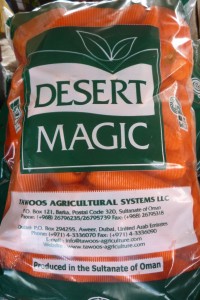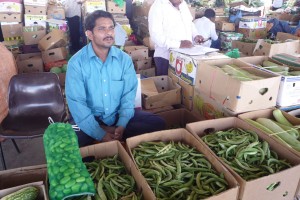I recently returned from nearly three weeks travelling in Jordan and Syria. Although my principal reason for the trip was to visit ruins and walk in the mountains and desert, I didn’t need any excuses not to go in search of vegetable seeds.
Syria was especially interesting. The country grows a huge amount of food and at this time of year the fields in the fertile valleys and in the terraced hills and mountains are full of crops of cucumbers, courgettes, tomatoes, egg plant, cabbages, salad crops and young wheat, flowering apple trees, cherry blossom everywhere and pistachio, fig, almond and apricot trees all coming into growth. Olives are grown at every elevation from mountain terrace to desert plain.
The cucumbers and courgettes are especially interesting as Syrians eat their cucumbers now when they are no more than about 12 cms long. They breed a particular variety to eat very young. Their courgettes are interesting too. Although they do grow American hybrid varieties including one called Babylon, some farmers also grow a native type which has a lower water content than the courgettes we are used to eating. These little Syrian beauties are firm, flavoursome and I found a refreshing alternative to the rather dull vegetable we usually grow.
I visited a food market in Aleppo and found two stalls selling vegetable seed, all locally grown. As soon as I got home on 19th April I sowed two varieties of courgette, one produced by a company called ocal Seed(!) and another which came loose from a horticultural supplier. I also sowed a local variety of mini-cucumber. Today, Easter Sunday 24th April and everything has germinated. Very exciting.
In both Jordan and Syria they like to eat young broad beans, chopped up and blanched before mixing with olive oil. This dish is a great delicacy and I was keen to find some local seed. In Damascus in the old souk I found a horticultural supplier who had sacks of seed. The bean is very small and the pods quite short and variable. I plan to sow some tomorrow. Fava beans are also popular and I ate them in a rich, creamy sauce flavoured with cumin. I was able to buy about 100 grams of this seed too. So it will be interesting to see how they grow although I am tempted to wait until next year to sow some as I want a long growing season to ensure I get a good crop of dried Fava, (broad) bean.
In both Damascus and Aleppo I found some interesting sweet peppers and some mild, large chillies. In this part of the world the locals do not eat very spicy food. Again, the seed I found in the market will have to wait until 2012 until I try to grow them.
Now, back home, I have been catching up with my veggie plans. Capsicums and the last of the tomato plants have been planted into the poly tunnels. A major weed on the allotment, sowing of roots and salad crops, transplanting under cloches of beans, sowing more peas, runner beans and French beans continues. Hopefully, with a dry Easter Monday I will be fully up to date.
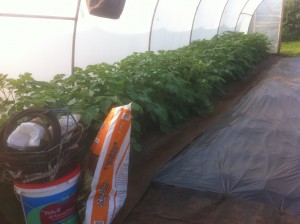
Early potatoes soon ready for digging.
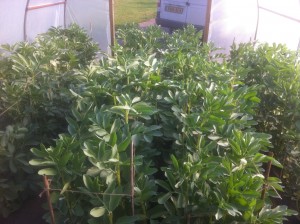
Aquadulce broad beans with good flower set.
It is a joy to have polytunnels. My early crop of the potato Rocket is in flower and I scrabbled around a few plants to see how the tubers are doing. There is certainly a meal now so this week i will be eating my first potatoes of 2011. The broad beans I sowed in another polytunnel are doing very well. Although, not the mos prolific flowers, Aquadulce gives a good crop and I have had a very good flower set. Today there are many pods, just a couple of inches long, starting to fill. I’ll be eating whole juvenile beans on May Day!
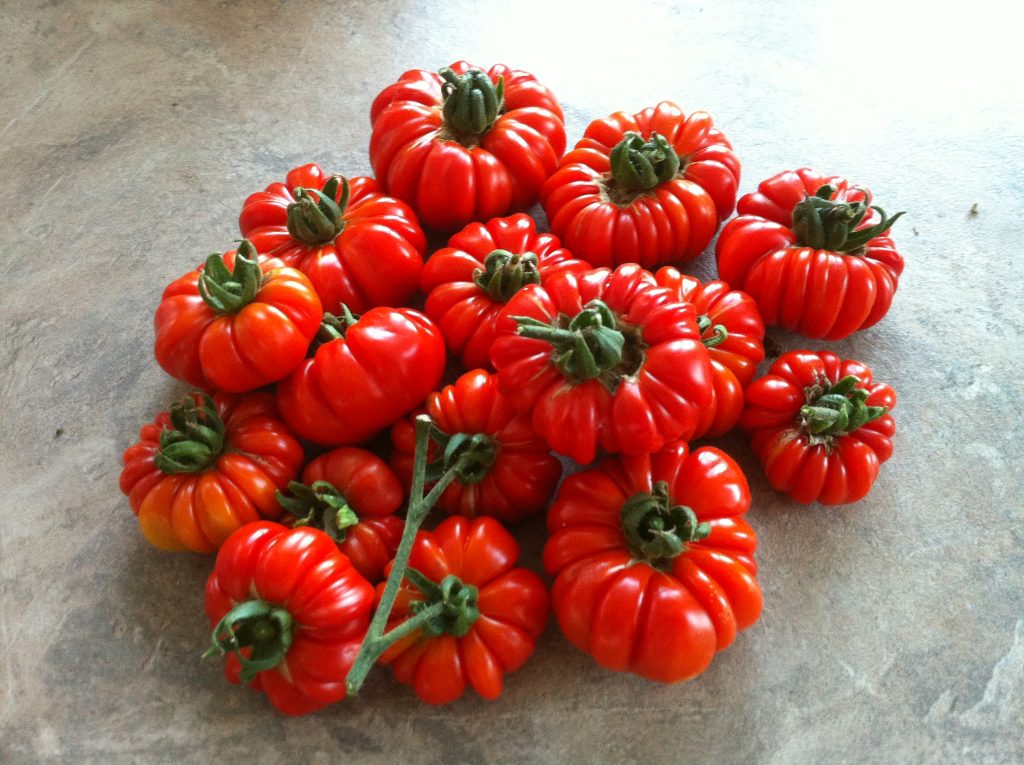
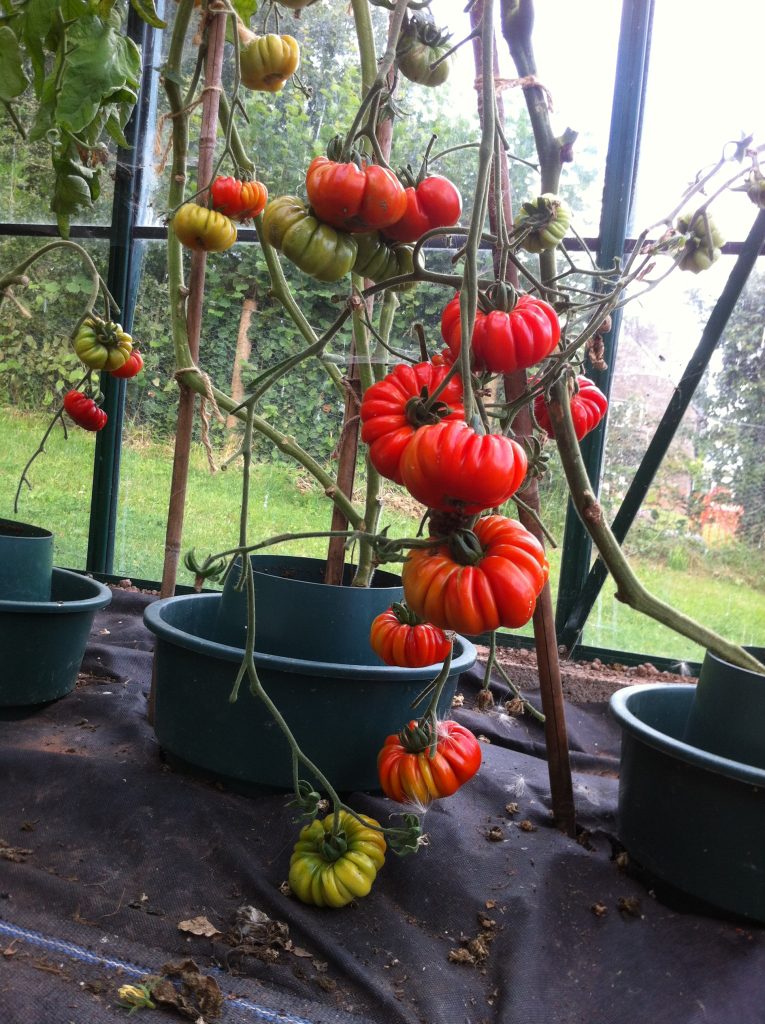
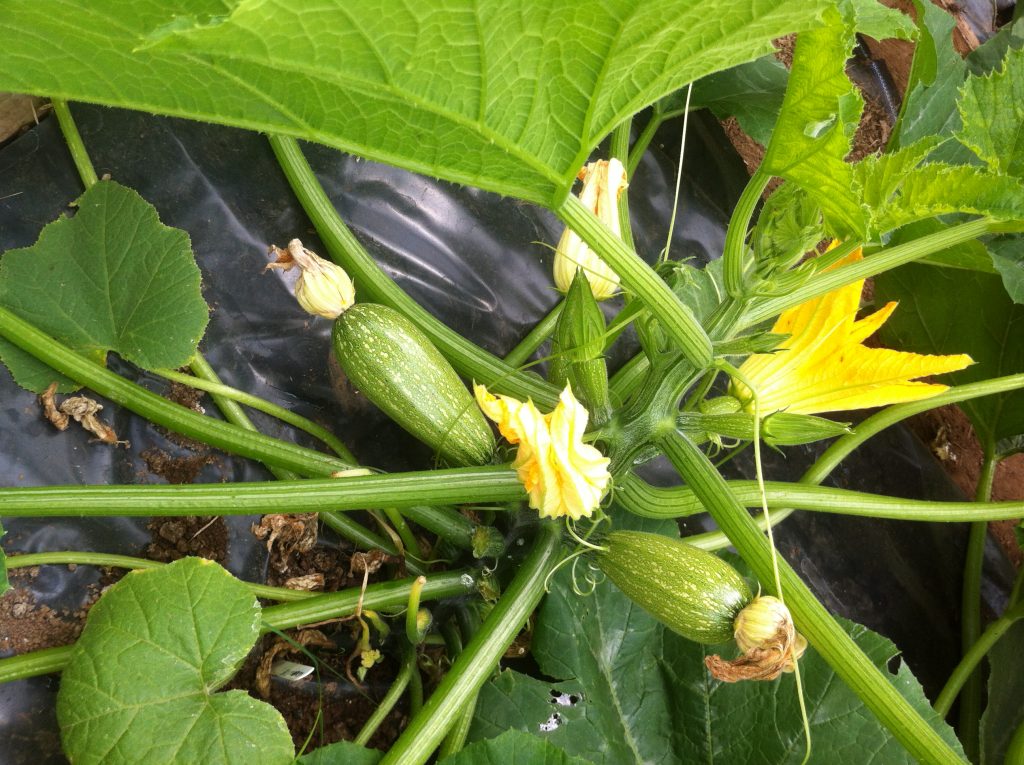 Finally I have managed to grow enough to pollinate and harvest my first seed. I should have plenty to share in 2017, especially with Syrian refugees who want to grow the vegetables of their homeland . The mature fruits are 50cms long and I have at least eight of these still to harvest!
Finally I have managed to grow enough to pollinate and harvest my first seed. I should have plenty to share in 2017, especially with Syrian refugees who want to grow the vegetables of their homeland . The mature fruits are 50cms long and I have at least eight of these still to harvest!
